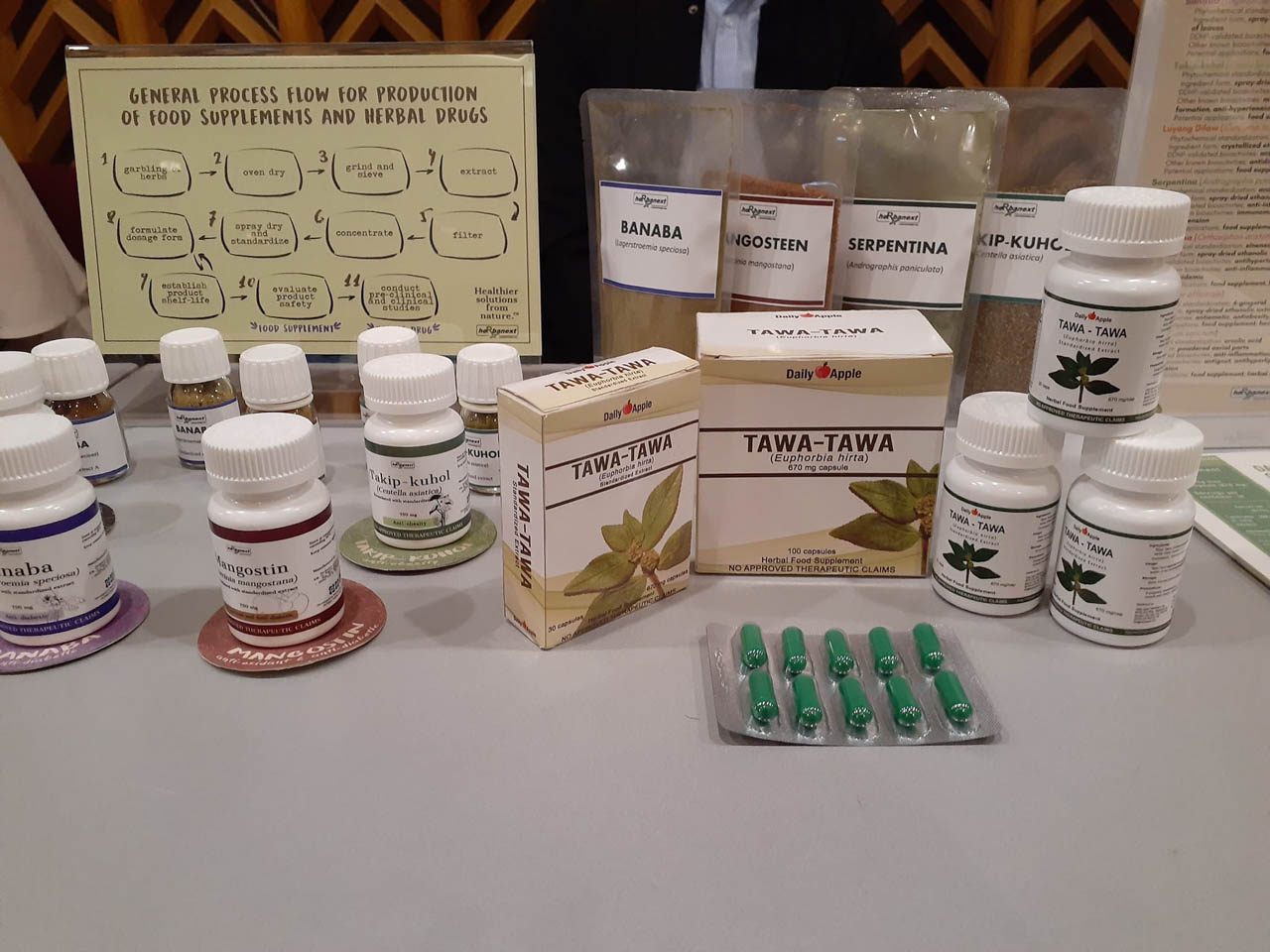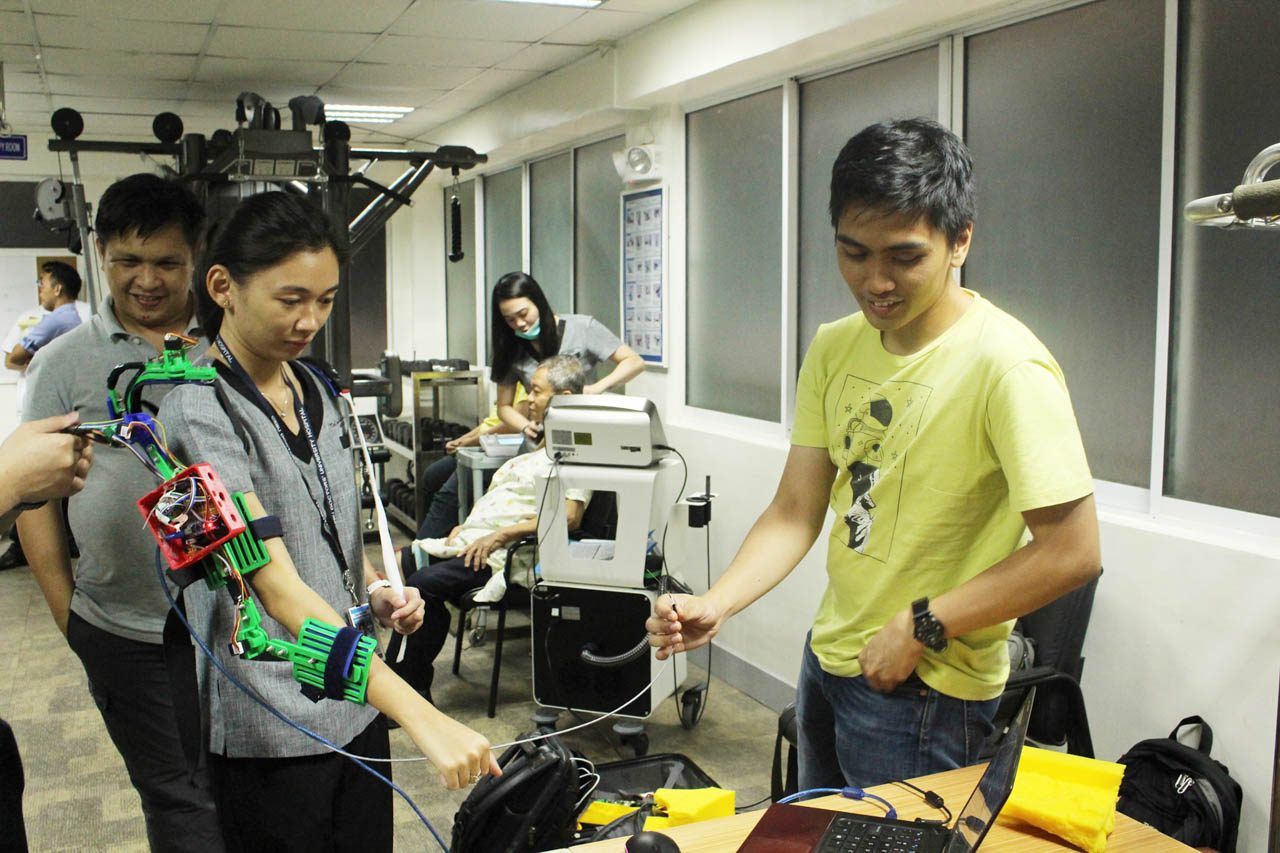SUMMARY
This is AI generated summarization, which may have errors. For context, always refer to the full article.

MANILA, Philippines – The Department of Science and Technology (DOST) has unveiled its plans to boost efforts in putting DOST-developed products and technologies into the market in 2020.
During the flag ceremony at the DOST compound in Bicutan, Taguig City, on Monday, January 6, DOST Secretary Fortunato de la Peña provided a rundown of the agency’s top products and technologies.
1. Plant-derived active ingredients for pharmaceuticals

The Philippine Council for Health Research and Development (DOST-PCHRD), through its Tuklas Lunas program, has discovered 18 active ingredients in local plants that could be used for drugs and other pharmaceutical products. Under PCHRD’s Tuklas Lunas program, the Philippines is set to unveil the world’s first anti-dengue drug.
2. Robotics for physical rehabilitation: AGAPAY and TAYÔ

Also under PCHRD’s project, Agapay and Tayô are robotics and artificial intelligence-assisted technologies meant to assist injured patients in their journey toward recovery.
Agapay (in English: parallel) Exoskeleton is a cost-effective 3D-printed wearable robot to help post-stroke and other injured patients to move their upper limbs better and faster.
Meanwhile, Tayô (in English: to stand) is a 3D-printed wearable machine that helps physical therapists to minimize lifting, mobilizing, and transferring patients with injuries in their lower extremities.
3. A breath of relief: Ginhawa

Ginhawa (in English: relief) is a low-cost ventilator developed by Filipino researchers. Ginhawa can be used for both children and adults in intensive care units.
4. Boosting coconut production
Filipino scientists have developed a method to improve coconut propagation through a process called “somatic embryogenesis technology” (CSet). Through this technology, coconut variety with better genetic stock can be reproduced using immature flowers and immature embryos.
“Kung dati nakakakuha lang tayo ng isang puno sa isang mature na coconut fruit, doon sa unang bahagi ng research, naka-exceed ng 300 planting materials ang UP Los Baños from one fruit using tissue culture,” De La Peña said.
(If before we could only get one tree from a mature coconut fruit, during the first part of the research, UP Los Baños exceeded 300 planting materials from one fruit using tissue culture.)
5. Taking stock in native livestock
The Philippine Council for Agriculture, Aquatic, and Natural Resources Research and Development of the Department of Science and Technology (DOST-PCAARRD) has been continuously aiding studies to improve native pig varieties in the Philippines. Native pigs are deemed to provide high-quality protein food, adaptable to local environment conditions, resistant to a number of diseases, and has a unique texture and meaty taste.
Led by the Marinduque State University, among the studies they are conducting are improving the variety, breeding, and selection, and free range native pig production management.
6. Sailing to new ventures: Hybrid Trimaran
De La Peña is positive that the Hybrid Trimaran, a multi-hull boat being developed in Aklan could be launched on the first semester of 2020. This cargo vessel can harvest energy from ocean waves. It is envisioned to carry 150 passengers, 4 vans, and 15 motorcycles. The Hybrid Trimaran is one of the mass transportation technologies DOST is developing.
7. Enhancing agriculture through engine manufacturing

The Philippines’ first locally-made diesel engine is developed by the Metals Industry Research and Development Center. According to the science agency, this 12-horsepower engine “will have a crucial role in agricultural modernization.” De La Peña mentioned that at least two private companies have expressed interest in acquiring license to manufacture this engine.
A hope to hit the market soon
“We need to reach out to the sectors which have the potential to commercialize or utilize our products and technologies derived from publicly-funded research,” De La Peña told Rappler in an email.
De La Peña also noted that the agency has started to promote their technologies in specific forums catering to different sectors, technologies, and products. And if industry or technology experts have identified gaps, the agency, through its attached bureaus and offices, conduct further research and development.
To support the commercialization of the up-and-coming technologies and products, De La Peña said: “We have streamlined our technology licensing procedures. And we make sure the provisions of the Technology Transfer Act are followed to motivate the researchers concerned.” – Rappler.com
Add a comment
How does this make you feel?
There are no comments yet. Add your comment to start the conversation.